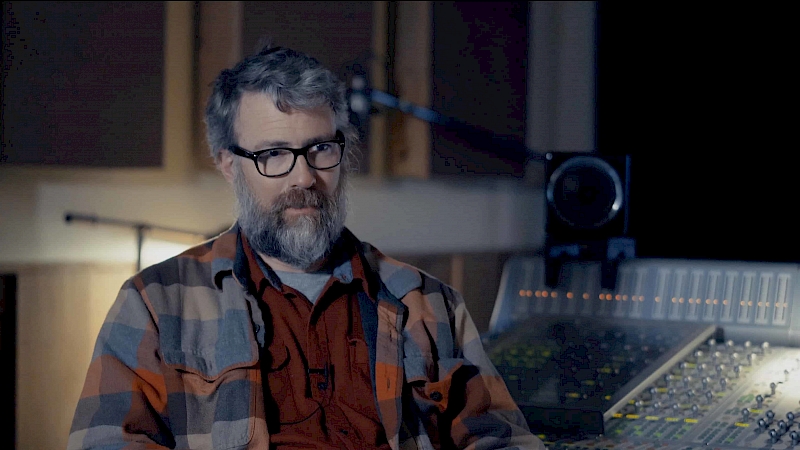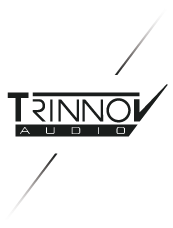Coll Anderson Interview
(Wild, Melancholia, Black Swan, Antichrist, Dead Man)
7 May 2019
Videos
| Case Studies

A staple In the post-production film industry Coll Anderson is a supervising sound editor and re-recording mixer who has worked for many A-list directors and TV channels from Jim Jarmusch to Woody Allen Or National Geographic. Spanning over 25 years his bulk of work Is quite impressive and always at the forefront of sound design.
In this Interview, we wanted to discuss moving his main workplace from Manhattan to the countryside and how installing a D-MON has introduced a new level of confidence In his work solving many problems he faced along the way.
Can You Please Tell Us About Yourself And How You Got Into The Industry?
I started working in the film business so long ago that I don’t remember! I was a student at Sarah Lawrence College and I had been working on a documentary film with another student from the visual Environmental Studies program at Harvard and I sort of fell in love with the idea of recording things using a Nagra analog tape and microphones going out into the world and recording things.
The process involved itself into making a bigger thing than what you had, and I fell in love with that and then when I realized it was married to image, that it wasn’t sound as an art on its own like music is I started working in film sound I started working on set, you know documentaries feature films TV…
And that became my sort of love, I mean that’s what I fell in love with, and I go back to the idea of creativity and film sound telling story I go back to my roots of let’s go out into the field and record things, and so I love that but what I really it’s a building block a foundation of telling stories and to me, the art of telling stories in movies is what I really do, so am I a supervising sound editor re-recording mixer? Yeah! By title that’s the credit I get but what I really do is I help directors finalize and realize a story and that’s kind of I’m kind of into.
How Did You First Encounter Trinnov Audio Processors?
What I want to do is to grow constantly so that my art grows constantly and never stagnate and that was where we sort of butted heads with the technology that was in here and that was when I started to look around for you know what: there has to be somebody who has looked at this problem!
And said we can build a device that can work as a digital to analog converter (because I like an outboard converter away from the Avid box) and can look at the room and analyze the room and give me a good picture of what’s happening and a way to correct it into the sense of what I’m used to, a theatrical curve that I’m used to, telling me this is kind of what it’s going to do in a theater and nowadays we kind of have to do that with TV in mind and multimedia in as well.
So when I started to say I want a device that I don’t need to have a degree in engineering and that I can get my hands into and start to change correct tune my room to me because I don’t need to tune my room to somebody else I need to tune it for me!
I started to look at different boxes and the Trinnov came on the radar and when it came on the radar we kind of said oh look it’s a D to A converter and when Matt Snedeker the effects’ editor that I work with forever said hey I think it’s a replacement for your X-Mon and isn’t the DMON an X-Mon? And I was like no seriously? I’m going to get rid of two boxes at once? Because that’s kind of my love is the fewer boxes that I have the happier I am!
What Were Your First Reactions Hearing Your Room Calibrated With The Trinnov?
We took everything out of the system and listened to the room just the way it sounded just completely with nothing these are sort of like okay that’s pretty interesting then we shot the room with the Trinnov Microphone, and we sort of did let it do its thing: we listened to it, we were like wtf ?!
We’re all kind of stupefied because we were kind of like wait a sec: that sounds perfect!!! And we haven’t touched anything, yet? First, the speakers were in the wrong place, so we moved our speakers a little because it told us this information that we kind of didn’t expect it would be able to tell us, and then we sort of ran things again, and we ran things a couple of different times… We played with a lot, and then we sort of said you know what let’s just listen and put up a movie that I mixed and see like what it sounds like and that was when we were like oh yeah this is the better way: This is how we should be doing it from now on.
What Is The Main Advantage Of Having A D-MON Here In Your Room?
I’d love to be able to crawl into you know correcting for time-frequency and phase but here it did all of that by itself, so I didn’t have to! The coolest thing was it instantly focused my speakers and gave me a crystalline phantom center, immediately! If there’s a little correction I have to make with my speaker’s one’s, I could fix it and I could see it immediately and fix it and then recalibrate.
So it let me do those things, and then it gave me a center channel that worked seamlessly with the left center and the right, one of the things that the Trinnov did was made it instant: the first time I ran pink around the room it was like: wow that’s fantastic! And all of a sudden panning cars you know fall seamlessly through the center channel, there’s none of that like oh I’m sitting by the ocean with the seashell on my ear, there are just cars goes across the screen: beautiful! That’s super nice! And to be able to do it quickly and not have to think about it: I kind of like that! It keeps me back in doing what I’m doing: that was pretty much the third thing that the Trinnov did.
It gave us a sort of sense of room confidence that we could work with and instantly hear the results and I could see levels wise where I was at and what I was getting, that’s just super nice! That confidence is a super nice thing to have and to be able to do it immediately: Wow!
How Did It Integrate Into Your Current Set-up?
When you start to examine a device like this that as a mixer we need to integrate with wait I need to interface with, I need to use it, I need to touch it. I need it to be simple because I’m actually working on something else. I’m not working on tuning my room. I’m working on making a movie.
So I need a sort of level of simplicity and integration and the D-MON gave us all of that, it did what all my sort of old avid gear did and more, just the X Mon section alone: being able to do that is you know fascinating but I don’t have to think too hard about you know my smalls or my surrounds.
I had no problem building a 5.1 to a stereo matrix in the unit so that when I hit my smalls like literally when I go into small speakers, I instantly get a fold-down of my 5:1 in stereo and this is not me listening to my 5:1, I’m listening to a fold down mix and I set the parameters for what I want my fold down to work, it’s the same as what I use when I’m mixing and no problem, at all, I get my sort of oh I can hear what my stereo is gonna sound like on smalls: no problem and level corrected and I can choose what I want to correct!
Like with my Avantones: they sound like crap and I need them to sound like that! The integration with the D-MON in being able to use them effectively quickly easily but not have it interferes with what I’m trying to do which is to tell stories has made it a welcomed piece of equipment
How Precisely Were You Able To Tailor The Sound Of Your Room To Your Needs?
Being able to not just go: okay get my room back to zero, it’s not just that: it’s being able to dial in the way I hear so that what is happening accommodates me and that is one of the things that make the box that’s what makes me very happy with the D-MON: being able to just listen to my surrounds like I’m going to lower my surround volume a Db and a half and push it back a little so that I compensate naturally when I mix.
I messed with stuff in the room like I went and screwed stuff up on the speakers and ran it again and it saw everything that I had done, and I was Like holy shit! I’m not gonna lie: there I put a piece of tissue paper taped in front of one of the tweeters to see if it would fix it, and it did! Again I was like: Wow!
Do You Think The D-MON Was An Expensive Purchase?
If not for the analog-to-digital conversion if not for the straightforward usability but then for the ability to tailor the sounds to what you need to hear to do your job effectively period because of that in and of itself is worth and who are we kidding when you really get to equipment that lets you do that when we really are talking about the handful of boxes that let you actually really tune a room well and have control after the fact to tailor it’s not that expensive it’s actually a very attractive price point.
Do You Think Using The D-MON Has Affected The Level Of Confidence In Your Work?
That lends itself to a level of creativity that’s just above and beyond where I was five years ago, that’s worth its weight in gold, that ultimately is the gear that I want, here you can experiment without being afraid, it’s let me on several occasions rethink the way I want to hear stuff rethink the way I want to mix, experiment with things.
We had a speaker go down it made it instantly easy for us to put new speakers in the wall reshoot the room go right back to work confidently! That alone was huge: confidently, I am super happy with the film that I mixed with speakers that I don’t listen to all the time and then when I took them out and put the speakers that I’m used to, back in the wall reshoot the room I learned to top myself a couple of little tricks with the software right back to where I was, and I was like wow this is exactly like this is exactly what I thought I had: Wow!
I just can’t argue with that! I don’t want to say magic, but it’s that ability to do that and maintain my confidence allows me to be creative at the level that I want to be.

